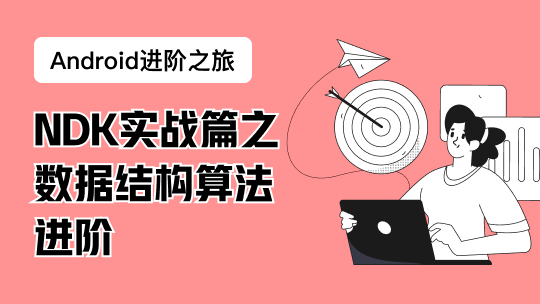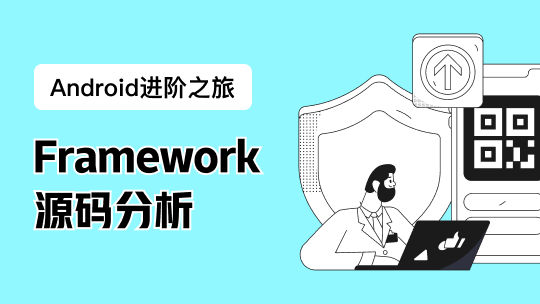源码使用是版本是4.5.0
这章主要有
- MQProducer API介绍
- DefaultMQProducer#start()方法分析
- Producer发送同步消息的过程。
MQProducer API
//启动消息发送者,在进行消息发送之前须调用此方法
void start() throws MQClientException;
//关闭消息发送者,不再需要此发送者时进行关闭
void shutdown();
//根据 Topic 查询所有的消息消费队列列表
List<MessageQueue> fetchPublishMessageQueues(final String topic) throws MQClientException;
//发送消息,同步的方式,未指定超时时间默认为3S
SendResult send(final Message msg) throws MQClientException, RemotingException, MQBrokerException,InterruptedException;
//发送消息,异步的方式
void send(final Message msg, final SendCallback sendCallback) throws MQClientException,RemotingException, InterruptedException;
//发送消息,oneway的方式
void sendOneway(final Message msg) throws MQClientException, RemotingException,InterruptedException;
//指定消息队列进行消息发送,这里为同步,重载的方法有异步,指定超时时间,oneway
SendResult send(final Message msg, final MessageQueue mq) throws MQClientException,
RemotingException, MQBrokerException, InterruptedException;
//消息发送时使用自定义队列负载机制,由 MessageQueueSelector 实现,Object arg 为传入 selector 中的参数。重载的方法有异步,指定超时,oneway
SendResult send(final Message msg, final MessageQueueSelector selector, final Object arg)
throws MQClientException, RemotingException, MQBrokerException, InterruptedException;
//发送事务消息,事务消息只有同步发送方式
TransactionSendResult sendMessageInTransaction(final Message msg,
final Object arg) throws MQClientException;
//批量发送消息
SendResult send(final Collection<Message> msgs) throws MQClientException, RemotingException, MQBrokerException,
InterruptedException;主要的API有:
- 启动与关闭Producer
- 发送同步消息,异步与oneway消息
- 发送指定超时时间消息
- 发送批量消息
DefaultMQProducer#start()方法分析
public void start(final boolean startFactory) throws MQClientException {
switch (this.serviceState) {
case CREATE_JUST:
this.serviceState = ServiceState.START_FAILED;
this.checkConfig();
// 注释3.3.2:改变名称为PID@host
if (!this.defaultMQProducer.getProducerGroup().equals(MixAll.CLIENT_INNER_PRODUCER_GROUP)) {
this.defaultMQProducer.changeInstanceNameToPID();
}
//初始化mQClientFactory为MQClientInstance,并将该实例加入factoryTable
this.mQClientFactory = MQClientManager.getInstance().getAndCreateMQClientInstance(this.defaultMQProducer, rpcHook);
//将producer注册到MQClientInstance.producerTable
boolean registerOK = mQClientFactory.registerProducer(this.defaultMQProducer.getProducerGroup(), this);
if (!registerOK) {
this.serviceState = ServiceState.CREATE_JUST;
throw new MQClientException("The producer group[" + this.defaultMQProducer.getProducerGroup()
+ "] has been created before, specify another name please." + FAQUrl.suggestTodo(FAQUrl.GROUP_NAME_DUPLICATE_URL),
null);
}
//保存topic对应的路由信息
this.topicPublishInfoTable.put(this.defaultMQProducer.getCreateTopicKey(), new TopicPublishInfo());
if (startFactory) {
//启动MQClientInstance
mQClientFactory.start();
}
log.info("the producer [{}] start OK. sendMessageWithVIPChannel={}", this.defaultMQProducer.getProducerGroup(),
this.defaultMQProducer.isSendMessageWithVIPChannel());
this.serviceState = ServiceState.RUNNING;
break;
case RUNNING:
case START_FAILED:
case SHUTDOWN_ALREADY:
throw new MQClientException("The producer service state not OK, maybe started once, "
+ this.serviceState
+ FAQUrl.suggestTodo(FAQUrl.CLIENT_SERVICE_NOT_OK),
null);
default:
break;
}
this.mQClientFactory.sendHeartbeatToAllBrokerWithLock();
}
public void start() throws MQClientException {
synchronized (this) {
switch (this.serviceState) {
case CREATE_JUST:
this.serviceState = ServiceState.START_FAILED;
// If not specified,looking address from name server
if (null == this.clientConfig.getNamesrvAddr()) {
this.mQClientAPIImpl.fetchNameServerAddr();
}
// Start request-response channel
this.mQClientAPIImpl.start();
// Start various schedule tasks
this.startScheduledTask();
// Start pull service
// 注释5.4.1:pull线程池启动
//执行PullMessageService#pullMessage方法,以后台线程运行
this.pullMessageService.start();
// Start rebalance service
//给consumer分配队列,以后台线程运行
this.rebalanceService.start();
// Start push service
this.defaultMQProducer.getDefaultMQProducerImpl().start(false);
log.info("the client factory [{}] start OK", this.clientId);
this.serviceState = ServiceState.RUNNING;
break;
case RUNNING:
break;
case SHUTDOWN_ALREADY:
break;
case START_FAILED:
throw new MQClientException("The Factory object[" + this.getClientId() + "] has been created before, and failed.", null);
default:
break;
}
}
}逻辑流程:
- 初始化mQClientFactory为MQClientInstance,并将该实例加入factoryTable
- 将producer注册到MQClientInstance.producerTable
- 保存topic对应的路由信息
- 启动MQClientInstance
关于启动MQClientInstance有如下逻辑:
- 启动Netty客户端,注意这里并没有创建连接,在producer发送消息的时候创建连接
- 启动一系列定时任务
- 在while循环里不间断拉取消息,以后台线程方式运行
- 给consumer分配队列,以后台线程运行
关于启动一系列定时任务有:
- 2分钟获取一次NameServer地址
- 默认30S更新一次topic的路由信息,频率可配置
- 30秒对Broker发送一次心跳检测,并将下线的broker删除
- 5秒持久化一次consumer的offset
- 每分钟调整线程池大小,不过里面代码注释掉了
定时任务使用的是scheduleAtFixedRate,如果上一次任务超时则一下次任务会立即执行。
发送同步消息
这里以发送同步消息为例,接口定义在MQProducer,实现是在DefaultMQProducer类里,而DefaultMQProducer又将真正实现细节委托给DefaultMQProducerImpl了:
public SendResult send(
Message msg) throws MQClientException, RemotingException, MQBrokerException, InterruptedException {
//这里会使用默认的超时时间3s
return send(msg, this.defaultMQProducer.getSendMsgTimeout());
}
public SendResult send(Message msg,
long timeout) throws MQClientException, RemotingException, MQBrokerException, InterruptedException {
//这里进一步明确指定了使用同步的方式发送
return this.sendDefaultImpl(msg, CommunicationMode.SYNC, null, timeout);
}
private SendResult sendDefaultImpl(
Message msg,
final CommunicationMode communicationMode,
final SendCallback sendCallback,
final long timeout
) throws MQClientException, RemotingException, MQBrokerException, InterruptedException {
//判断服务状态是否是RUNNING,默认值是CREATE_JUST,在调用start()方法时会修改成RUNNING
this.makeSureStateOK();
//这里会校验topic的合法性,msg body是否为空,是否有超过最大4M
Validators.checkMessage(msg, this.defaultMQProducer);
//使用Random生成一个随机值(Random使用CAS+AtomicLong实现,在高并发场景下性能不会特别好,可以考虑使用ThreadLocalRandom)
final long invokeID = random.nextLong();
long beginTimestampFirst = System.currentTimeMillis();
long beginTimestampPrev = beginTimestampFirst;
long endTimestamp = beginTimestampFirst;
// 注释3.4.2:查找Topic的路由信息,先从本地找,本地没有会去NameServer寻找,如果还会找到抛异常
TopicPublishInfo topicPublishInfo = this.tryToFindTopicPublishInfo(msg.getTopic());
if (topicPublishInfo != null && topicPublishInfo.ok()) {
boolean callTimeout = false;
MessageQueue mq = null;
Exception exception = null;
SendResult sendResult = null;
//如果是同步方式会重试3次,异步不重试
int timesTotal = communicationMode == CommunicationMode.SYNC ? 1 + this.defaultMQProducer.getRetryTimesWhenSendFailed() : 1;
int times = 0;
String[] brokersSent = new String[timesTotal];
for (; times < timesTotal; times++) {
String lastBrokerName = null == mq ? null : mq.getBrokerName();
/**
* 根据每个broker处理的时间选择发送队列
* 每个队列MessageQueue里会有topic,brokerName及队列ID
*/
MessageQueue mqSelected = this.selectOneMessageQueue(topicPublishInfo, lastBrokerName);
if (mqSelected != null) {
mq = mqSelected;
brokersSent[times] = mq.getBrokerName();
try {
beginTimestampPrev = System.currentTimeMillis();
long costTime = beginTimestampPrev - beginTimestampFirst;
//获取topic与选择队列整体超时了,需要抛出异常
if (timeout < costTime) {
callTimeout = true;
break;
}
//真正发送消息逻辑,这里的超时时间需要减去获取topic与选择队列的时间
sendResult = this.sendKernelImpl(msg, mq, communicationMode, sendCallback, topicPublishInfo, timeout - costTime);
endTimestamp = System.currentTimeMillis();
//发送完消息后,维护此broker与发送消息所花时间的对应关系,这是上面selectOneMessageQueue选择broker的一个参考
this.updateFaultItem(mq.getBrokerName(), endTimestamp - beginTimestampPrev, false);
switch (communicationMode) {
case ASYNC:
return null;
case ONEWAY:
return null;
case SYNC:
//如果是同步,发送失败则根据条件尝试重试
if (sendResult.getSendStatus() != SendStatus.SEND_OK) {
if (this.defaultMQProducer.isRetryAnotherBrokerWhenNotStoreOK()) {
continue;
}
}
return sendResult;
default:
break;
}
} catch (RemotingException e) {
endTimestamp = System.currentTimeMillis();
this.updateFaultItem(mq.getBrokerName(), endTimestamp - beginTimestampPrev, true);
log.warn(String.format("sendKernelImpl exception, resend at once, InvokeID: %s, RT: %sms, Broker: %s", invokeID, endTimestamp - beginTimestampPrev, mq), e);
log.warn(msg.toString());
exception = e;
continue;
} catch (MQClientException e) {
endTimestamp = System.currentTimeMillis();
this.updateFaultItem(mq.getBrokerName(), endTimestamp - beginTimestampPrev, true);
log.warn(String.format("sendKernelImpl exception, resend at once, InvokeID: %s, RT: %sms, Broker: %s", invokeID, endTimestamp - beginTimestampPrev, mq), e);
log.warn(msg.toString());
exception = e;
continue;
} catch (MQBrokerException e) {
endTimestamp = System.currentTimeMillis();
this.updateFaultItem(mq.getBrokerName(), endTimestamp - beginTimestampPrev, true);
log.warn(String.format("sendKernelImpl exception, resend at once, InvokeID: %s, RT: %sms, Broker: %s", invokeID, endTimestamp - beginTimestampPrev, mq), e);
log.warn(msg.toString());
exception = e;
switch (e.getResponseCode()) {
case ResponseCode.TOPIC_NOT_EXIST:
case ResponseCode.SERVICE_NOT_AVAILABLE:
case ResponseCode.SYSTEM_ERROR:
case ResponseCode.NO_PERMISSION:
case ResponseCode.NO_BUYER_ID:
case ResponseCode.NOT_IN_CURRENT_UNIT:
continue;
default:
if (sendResult != null) {
return sendResult;
}
throw e;
}
} catch (InterruptedException e) {
endTimestamp = System.currentTimeMillis();
this.updateFaultItem(mq.getBrokerName(), endTimestamp - beginTimestampPrev, false);
log.warn(String.format("sendKernelImpl exception, throw exception, InvokeID: %s, RT: %sms, Broker: %s", invokeID, endTimestamp - beginTimestampPrev, mq), e);
log.warn(msg.toString());
log.warn("sendKernelImpl exception", e);
log.warn(msg.toString());
throw e;
}
} else {
break;
}
}
if (sendResult != null) {
return sendResult;
}
String info = String.format("Send [%d] times, still failed, cost [%d]ms, Topic: %s, BrokersSent: %s",
times,
System.currentTimeMillis() - beginTimestampFirst,
msg.getTopic(),
Arrays.toString(brokersSent));
info += FAQUrl.suggestTodo(FAQUrl.SEND_MSG_FAILED);
MQClientException mqClientException = new MQClientException(info, exception);
if (callTimeout) {
throw new RemotingTooMuchRequestException("sendDefaultImpl call timeout");
}
if (exception instanceof MQBrokerException) {
mqClientException.setResponseCode(((MQBrokerException) exception).getResponseCode());
} else if (exception instanceof RemotingConnectException) {
mqClientException.setResponseCode(ClientErrorCode.CONNECT_BROKER_EXCEPTION);
} else if (exception instanceof RemotingTimeoutException) {
mqClientException.setResponseCode(ClientErrorCode.ACCESS_BROKER_TIMEOUT);
} else if (exception instanceof MQClientException) {
mqClientException.setResponseCode(ClientErrorCode.BROKER_NOT_EXIST_EXCEPTION);
}
throw mqClientException;
}
List<String> nsList = this.getmQClientFactory().getMQClientAPIImpl().getNameServerAddressList();
if (null == nsList || nsList.isEmpty()) {
throw new MQClientException(
"No name server address, please set it." + FAQUrl.suggestTodo(FAQUrl.NAME_SERVER_ADDR_NOT_EXIST_URL), null).setResponseCode(ClientErrorCode.NO_NAME_SERVER_EXCEPTION);
}
throw new MQClientException("No route info of this topic, " + msg.getTopic() + FAQUrl.suggestTodo(FAQUrl.NO_TOPIC_ROUTE_INFO),
null).setResponseCode(ClientErrorCode.NOT_FOUND_TOPIC_EXCEPTION);
}
同步发送消息的逻辑还是比较简单的:
- 如果没指定超时时间,则使用默认的3S超时,需要注意下这里的超时时间指是超时时间而非单次重试的时间(4.3.0版本为单次超时时间)
- 校验Producer服务状态是否正确,topic是否有效,消息体长度是否合法
- 获取topic路由信息,先在本地查找,本地没有查寻NameServer
- 根据每个broker处理的时间选择发送队列,每次发送完消息后会记录broker与每次发送消息所花时间
- 发送消息。如果是同步发送最多会重试3次,也可通过配置进行调整
- 记录此broker与发送消息所花时间的对应关系
总结一下Producer发送消息流程:
- 启动Producer客户端
- 获取topic路由信息
- 选择队列发送消息






